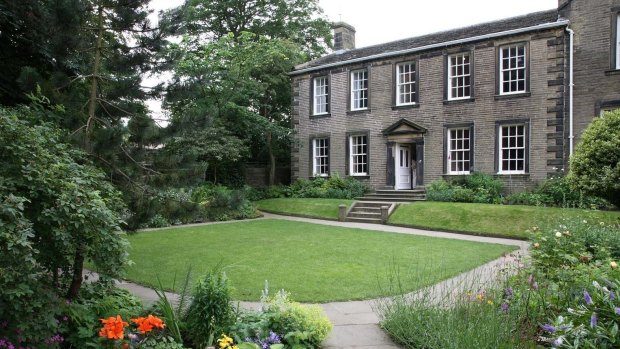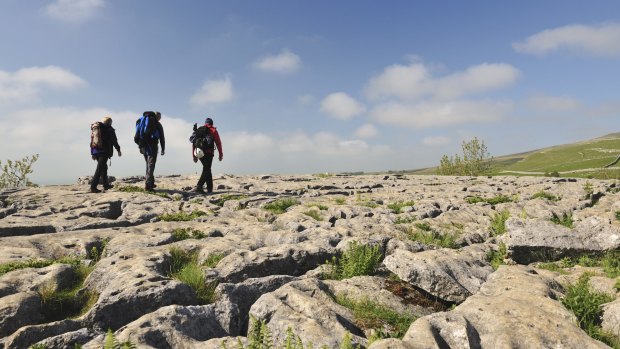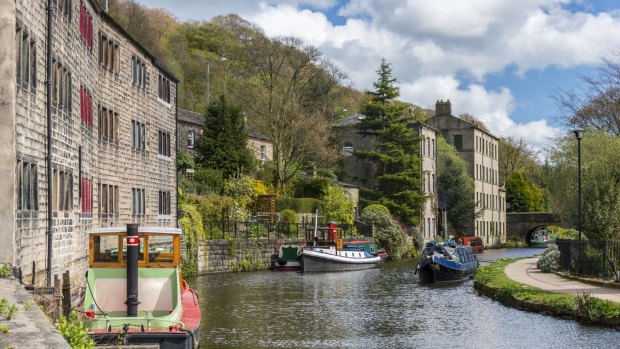This was published 1 year ago
Six of the best experiences where the Bronte sisters wrote their novels

Bronte Parsonage Museum.Credit: Visit Britain
BRONTE PARSONAGE MUSEUM
The recent release of Frances O'Connor's film Emily, a fictional account of how Wuthering Heights was conceived, has refocused attention on England's "Bronte country" where the three sisters, Charlotte, Emily and Anne wrote their novels. Yorkshire, England's largest county, is celebrated for its "rambles", particularly the Dales (James Herriot country) and the North Moors, but Bronte Country is also a pedestrian paradise. When the Bronte sisters lived here, with their ne'er-do-well brother, Branwell, this was Haworth Parsonage where their Irish-born father, Patrick, was appointed curate in 1820. It's the obvious place to start any walking tour of Bronte Country. The ground floor is wheelchair accessible, but not the bedrooms above (the parsonage is heritage listed). Still, "the world's most famous literary family" (according to the guide book) deserves at least an hour of your time to fully appreciate how lonely the three literary sisters must have been in the bleak midwinter on the edge of the Pennines. See bronte.org.uk
BRONTE WATERFALL
What does “wuthering” mean, you ask? Wind-swept or weathered. And the inspiration for Emily’s dark masterpiece is commonly identified with Top Withens, a ruined farmhouse 6.5 kilometres above Haworth with glorious views of some of the oldest moorlands in Europe. On the way, pause at the Bronte Waterfall, especially if it has recently rained. More of a cascade than a waterfall, it was apparently much visited by the sisters in their youth (particularly Emily) and is now much easier accessed from Penistone Hill Country Park (where there is free car parking). See yorkshire.com/walking/penistone-hill-country-park
BRONTE WAY

Credit: VisitBritain
This is only for the literary foolhardy. At 70 kilometres, it transverses the Pennines from Oakwell Hall, near Bradford (supposedly the setting for Charlotte's novel Fieldhead) to - heaven forbid - Lancashire. It offers large opportunities for the Bronte-minded but ends on the western side of the Pennines at Gawthorpe Hall near Burnley. It too revels in a title: Pendle Witch Country. The so-called Witches of Pendle - nine women and two men - were hanged for witchcraft in 1612. One woman was spared. See visitlancashire.com/things-to-do/the-lancashire-witches
RAILWAY CHILDREN
The Bronte sisters' literary achievements coincided with the birth of the railway age. Charlotte travelled to Paris by rail to work as a governess, and Branwell actually was a railway clerk when he was sober. However this 10-kilometre walk from Haworth to Oakworth Station takes in not only the kind of steam trains the sisters travelled on but the locations of the classic 1970 film adaptation of Edith Nesbit's book, The Railway Children. Haworth now has a part-time volunteer-run station that is a stop on the Keighley and Worth Valley railway. See kwvr.co.uk
HAWORTH TO HEBDEN BRIDGE

Credit: iStock
Starting from Penistone Hill Country Park, this 13-kilometre track takes you due south, past Lower Laithe and Leeshaw reservoirs, the wooded valley below Hardcastle Crags and the charming Lumb Hole waterfalls (beware the stepping stones). It climaxes at Hebden Bridge, regarded in Yorkshire as posh - and definitely picturesque. It sits at the confluence of the River Calder and Hebden Water, and is one of the most gay-friendly towns in Europe. See visitcalderdale.com/hebden-bridge-heptonstall
HAWORTH MAIN STREET
Take a tip. This cobbled street, crushed with Bronte lovers, must be one of the steepest literary thoroughfares in Europe. For maximum enjoyment wear comfortable shoes, start at the top and stroll downhill. The parsonage (and church) are near the summit, almost on the moors themselves. In the sisters' time, Haworth was a dirt-poor village, inhabited by miners and mill workers. Today Main Street is a quaint reincarnation - full of art galleries, book shops, cream tea-serving cafes, boutiques boasting Bronte memorabilia and ancient pubs from which one of the sisters would have had to rescue Branwell. See haworth-village.org.uk
Steve Meacham travelled at his own expense.
Sign up for the Traveller Deals newsletter
Get exclusive travel deals delivered straight to your inbox. Sign up now.